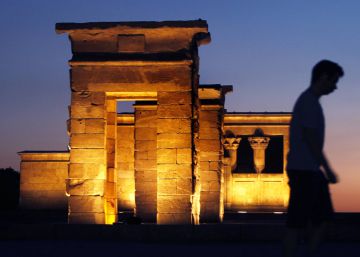Even among non-neuroscientists, determining the origin and purpose of consciousness is widely known as “the hard problem.” Since its coinage by philosopher David Chalmers thirty years ago, that label has worked its way into a variety of contexts; about a decade ago, Tom Stoppard even used it for the title of a play. Unsurprisingly, it’s also referenced in the episode of Big Think’s Dispatches from the Well above, which presents discussions of the nature of consciousness with neuroscientist Christof Koch, Vedanta Society of New York minister Swami Sarvapriyananda, technology entrepreneur Reid Hoffman, Santa Fe Institute Davis Professor of Complexity Melanie Mitchell, and mathematical physicist Roger Penrose.
Koch describes consciousness as “what you see, it’s what you hear, it’s the pains you have, the love you have, the fear, the passion.” It is, in other words, “the experience of anything,” and for all their sophistication, our modern inquiries into it descend from René Descartes’ proposition, “Cogito, ergo sum.” Sarvapriyananda, too, makes reference to Descartes in explaining his own conception of consciousness as “the light of lights,” by which “everything here is lit up.”
Mitchell conceives of it as a continuum: “I’m more conscious when I’m awake,” for example, and “certain species are more conscious than other species.” And perhaps it could develop even in non-biological entities: “I don’t think that we have any machines that are conscious in any interesting sense yet,” Mitchell says, but “if we ever do, they’ll be part of that spectrum.”
The question of whether a machine can attain consciousness naturally arises in host Kmele Foster’s conversation with Hoffman, who’s made serious investments in artificial-intelligence research. As impressive as AI chatbots have lately become, few among us would be willing to deem them conscious; nevertheless, attempting to create not just intelligence but consciousness in machines may prove a fruitful way to learn about the workings of the “genuine articles” within us. Penrose’s theory holds that consciousness arises from as-yet-unpredictable quantum processes occurring in the microtubules of the brain. Perhaps, as Koch has suggested, it actually exists to one degree or another in all forms of matter. Or maybe — to quote from a song in heavy rotation on my childhood Walkman — it’s just what you make of yourself.
Related content:
The Neuronal Basis of Consciousness Course: A Free Online Course from Caltech
John Searle Makes A Forceful Case for Studying Consciousness, Where Everything Else Begins
The Simulation Theory Explained In Three Animated Videos
Based in Seoul, Colin Marshall writes and broadcasts on cities, language, and culture. His projects include the Substack newsletter Books on Cities, the book The Stateless City: a Walk through 21st-Century Los Angeles and the video series The City in Cinema. Follow him on Twitter at @colinmarshall or on Facebook.
Jesus Christ: as soon as you hear those words, assuming they’re not being used exclamatorily, you see a face. In almost all cases, that face is bearded and framed by long brown hair. Usually it has strong, somewhat sharp features and an expression of benevolence, patience, faint expectancy, or (depending on the relevant Christian tradition) complete agony. Whatever the details of his appearance, even the least religious among us has a personal Jesus in our imagination, a composite of the many depictions we’ve seen throughout our lives. But where, exactly, did those depictions come from?
The UsefulCharts video above assembles the ten earliest known images of Jesus in art, organizing them in a countdown that works its way back from the sixth century. Remarkably, these examples remain immediately recognizable even a millennium and a half back, though beyond that point the son of God becomes rather more clean-cut.
“Originally, Jesus was always depicted without a beard,” explains UsefulCarts creator Matt Baker, “and as we’re about to see, he usually just looks like a typical Roman from the time of the Roman Empire.” Ancient-Rome enthusiasts will recognize his manner of dress, although they might be surprised to see him using a magic wand, in one late-third-century image, to raise Lazarus from the dead.
The holiday season is an especially appropriate time to consider where our cultural conception of Jesus comes from, given that he is — at least as some Christians put it — the very “reason for the season.” And indeed, among these ten earliest artworks featuring Jesus is a sarcophagus lid inscribed with a classic Christmas tableau, which depicts him as a “baby being held by his mother, Mary. Standing behind them is, presumably, Joseph, and in front of them are the three wise men and the star of Bethlehem.” That’s certainly a depiction of Jesus for all time. As for what depiction of Jesus reflects our own time, we can hardly stop a certain “restored” nineteen-thirties Spanish fresco turned internet phenomenon from coming to mind.
Related content:
What Makes Caravaggio’s The Taking of Christ a Timeless, Great Painting?
Behold! The Very First Christmas Card (1843)
Did Psychedelic Mushrooms Appear in Medieval Christian Art?: A Video Essay
Salvador Dalí’s Avant-Garde Christmas Cards
Based in Seoul, Colin Marshall writes and broadcasts on cities, language, and culture. His projects include the Substack newsletter Books on Cities, the book The Stateless City: a Walk through 21st-Century Los Angeles and the video series The City in Cinema. Follow him on Twitter at @colinmarshall or on Facebook.
La idea de una reconquista como proyecto unitario a lo largo de ocho siglos para restituir la península Ibérica a su estado anterior a la llegada de árabes y bereberes en el año 711 está más que en cuestión. “Ninguna campaña militar en la historia de la humanidad ha durado tanto”, afirmaba el hispanista británico Henry Kamen en una entrevista publicada por EL PAÍS este martes. Con todo, ¿planearon aquellos andalusíes reconquistar las tierras que les arrebataban los señores cristianos? ¿Hubo alguna vez un equivalente andalusí a la (re)conquista cristiana?

El pleno municipal aprobará este martes a propuesta del PSOE la cubrición del Templo de Debod con un concurso de ideas a partir de 2021. La proposición firmada por PP, PSOE, Más Madrid y Ciudadanos ha sido respaldada por unanimidad (también con los votos de Vox) y se desbloquea una situación de parálisis burocrática de dos años y de incumplimiento legal de más de cuatro décadas. El templo debía haber estado cubierto desde el día en que se inauguró, el 18 de julio de 1972. De esta manera, el alcalde de Madrid, José Luis Martínez-Almeida, asume la urgencia y acepta un trámite que licitará la obra de la nueva estructura en esta legislatura para construirla en la siguiente. La idea del futuro museo saldrá del informe técnico sobre el estado de conservación que elabora un grupo de trabajo, convocado en 2018 por el ejecutivo de Manuela Carmena.
